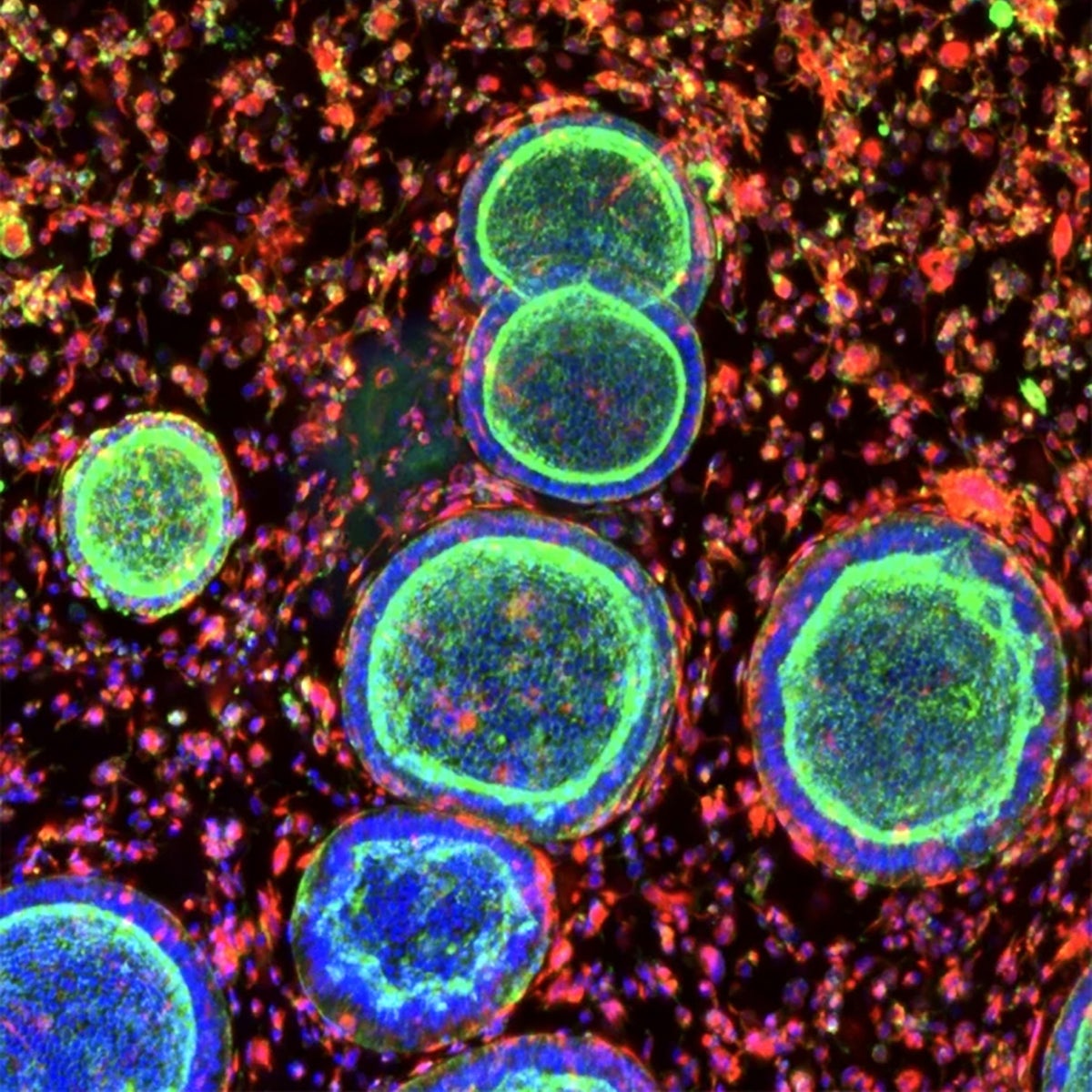
"We must do a pregnancy test on them, Moffett said. If Turco was correct, the miniature ball of cells she had created would secrete HCG, the hormone that triggers a positive pregnancy test. I took the stick, put it in, and it was positive, says Turco, now a reproductive biologist at the Friedrich Miescher Institute for Biomedical Research in Basel, Switzerland. It was the best celebration."
"Scientists make organoids such as this by coaxing stem cells to grow in a jelly-like substance and to self-assemble into clumps of tissue. The typically hollow or solid balls of cells don't look anything like real organs. But they do take on key aspects of the organ that they're meant to represent — liver, brain, lung or stomach, for instance. The mini-organs have the advantage of being more realistic than a 2D cell culture — the conventional in vitro workhorses — because they behave more like tissue."
In 2017 a reproductive immunologist bought a pregnancy test to check a lab-grown placental organoid after a postdoc created a cluster of cells thought to mimic placental tissue. The organoid tested positive for HCG secretion, confirming trophoblast-like function. Scientists create organoids by coaxing stem cells to self-assemble in a jelly-like matrix into hollow or solid cell balls that recapitulate key organ features. Organoids behave more like tissue than 2D cultures: cells divide, differentiate, communicate, respond to environment and die. Human-cell organoids can model human-specific biology more accurately than many animal models for liver, brain, lung and stomach tissues.
Read at www.nature.com
Unable to calculate read time
Collection
[
|
...
]